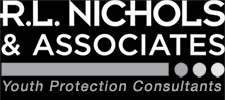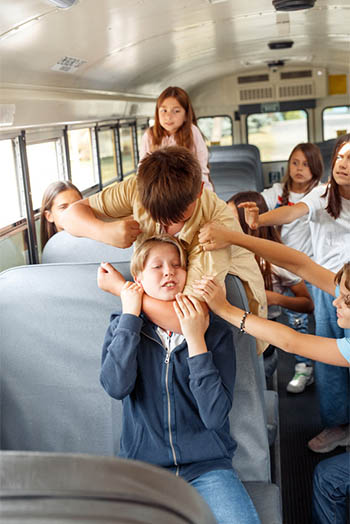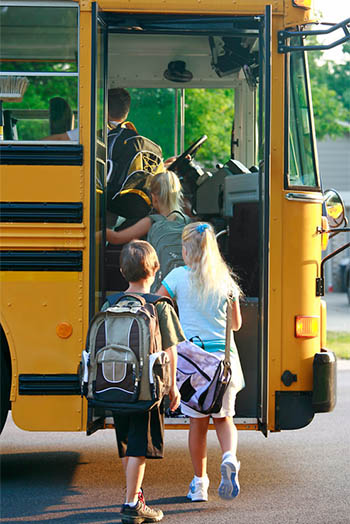Safety and Security Audits for Schools
and Youth-Serving Organizations
Crime is an inherent part of society and largely dependent upon the opportunities you present. For that reason, schools and youth-serving organizations should conduct a comprehensive, objective, safety and security audit every three to five years. Such an audit is often referred to as a “Threat-Vulnerability Assessment” (TVA). A TVA is an invaluable predictive tool that helps identify probable threats and how the organization might fail to recognize, respond, and resolve them. Examples of threats that any organization might encounter, include:
- Acts of terrorism (explosive, biological and chemical threats)
- Armed intruders
- Youth with covert weapons
- Workplace violence directed against staff
- Street crimes (auto theft, robbery, assault, rape, gang violence)
- Fighting and intimidation
- Bullying and suicide
- Sexual harassment and sexual abuse
- Abducted and runaway youth
- Vehicular-pedestrian injuries
- Violence at sports and special events
- Malicious food tampering
- Access to roofs and mechanical equipment
- Access to chemical hazards
- Trespassing and loitering on campus
- Compliance with relevant life safety codes
- Emergency response procedures, incident command structure and crisis communications plan
A comprehensive TVA typically involves the integration of three types of information which provide three, unique views into the organization’s strengths and vulnerabilities:
- A Safety Document Audit
- Key Staff Interviews
- A Facilities Safety Audit
Document Audit
A Document Audit compares your organization’s safety policies, procedures and processes against applicable regulations, industry standards and leading practices. Although all schools have written safety policies, they tend to be weak on translating those policies into written procedures and processes that can be easily audited and are consistently executed across all sites. We conduct the Document Audit by:
- Analyzing your existing, safety-related documents,
- Summarizing your policy strengths and vulnerabilities and
- Reviewing our findings with your organization’s leadership via phone or Zoom.
Typical documents we review and consider are typically pathways for later injuries, claims and legal actions and include:
- Current policies adopted by the board and pending policies
- Missing policies
- Codes of conduct for staff, volunteers, youth, and guests
- Emergency response procedures
- Crisis communication procedures (i.e., how leadership manages a crisis)
- Student/youth threat assessment procedures
- Child abuse reporting procedures
- Complaint and resolution procedures
- Accident and incident reporting forms
- Safety inspection forms
- Staff and volunteer screening and selection procedures
- Visitor management procedures
- Transportation procedures
- Corrective measures for staff, volunteers, and youth
- Staff, youth, and parent handbooks
- Workplace violence and sexual harassment prevention program
- Bullying prevention program
- Child sexual abuse prevention program
- Defined safety roles and responsibilities for staff and leadership
- Safety oversight committee roles and responsibilities
Besides being the foundation for other safety improvements, another practical benefit of a Document Audit is that most changes can be made at no cost or low cost. As a stand-alone service our Document Audit is an affordable way to begin the overall Vulnerability Assessment process.
Key Staff Interviews
Key Staff Interviews are valuable because they help us to understand:
- How likely your staff is to carry out existing or additional safety requirements,
- What safety concerns are not being fully addressed, and
- How staff is likely to react to an emergency or new situation.
Some topics we discuss with key staff at the school or unit level include:
- Neighborhood risks and crime that may be of concern
- Controlling access on your campus and in your buildings
- Visitor processing and management
- How security sweeps are conducted
- Your safety team’s strengths, challenges, and needs
- How employees are briefed or onboarded about security procedures
- How drills and other exercises are used to help employees think on their feet
- Which drills receive the greatest emphasis
- What emergency supplies and equipment are maintained
- Campus/building blind spots and how they are mitigated
- Student hot spots and how they are mitigated
- How employees’ safety skills are maintained
- How substitute teachers and late hires are brought up to speed on safety
- How daily safety communication is conducted (e.g., 2-way radios, cell phones)
- How your local public safety officials evaluate drills and other procedures
- How supervision skills are evaluated and improved
- How arrivals, dismissals, class changes, recess and lunch are managed to control risks
- Lock, key, and keycard management concerns
- Camera and intruder alarm management concerns
- Building-wide, campus-wide, and parent emergency notification concerns
- Resolving bus-related incidents involving your students
- Resolving actual or possible student threats
Some topics we may discuss with key staff at the district or organizational level include:
- Coordinating safety efforts across all departments and locations
- Sharing successful safety practices across the organization and rewarding safety efforts
- Staff and volunteer screening processes
- Confidential reporting mechanisms for concerns, complaints, and allegations
- Formal programs to control bullying, sexual abuse and workplace violence
- Formal student threat assessment and resolution process
- Transportation safety and security program
- Using safety objectives, outcomes, and metrics to drive continuous improvement
Facilities Audit
A Facilities Audit examines each campus (grounds and buildings) to identify how well the facilities support the organization’s policies and daily safety practices. We prefer to conduct a Facilities Audit via a four-step process:
- Gather the most current campus and building plans from the organization or its architects and engineers.
- Schedule each site visit, based on the location and size of each campus. Some campuses can be assessed in two to three hours, others may require a day.
- Document each campus assessment through standard checklists, photographs and marking up plans and develop an organization-wide matrix that:
- Identifies categories of needs (e.g., fencing, locks, cameras, entry re-designs)
- Locates specific actions for each campus and
- Estimates probable costs
- Review the preliminary findings with organization leaders.
Safety Master Plan
The Safety Master Plan integrates all findings and recommendations into one, comprehensive,
actionable document that charts a multi-year strategy, not only for safety, but for continuous
organization improvement. The typical sections of our Safety Master Plan include:
- Executive Summary
- Introduction and Process Employed
- Positive Safety Findings (i.e., those practices and conditions that should remain)
- Opportunities for Improvement
- Conclusions
- Master Assessment Guide (i.e., a matrix of improvements and costs)
- Individual Site Reports (i.e., detailed recommendations for each campus)
Procurement Services
We can assist your organization to competitively bid those safety and security systems that are not normally the responsibility of your architect, such as:
- Bus camera systems
- Student threat assessment management platform
- Emergency management platform
- Emergency mapping of each campus
Contact us for a no-obligation, discussion about your organization’s concerns about the safety and security of children and staff.








